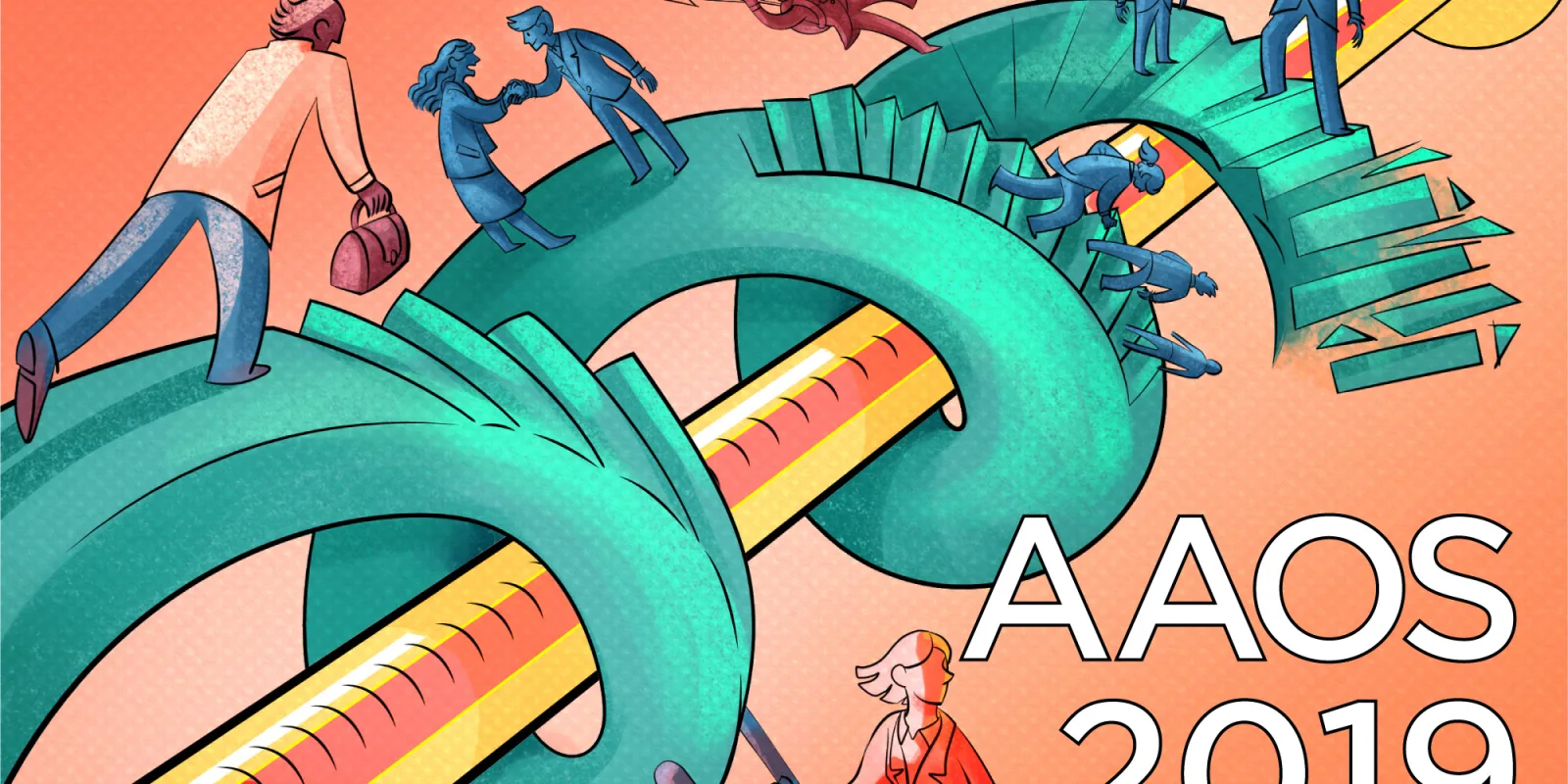
"We are like dwarfs sitting on the shoulders of giants. We see more, and things that are more distant, than they did, not because our sight is superior or because we are taller than they, but because they raise us up, and by their great stature add to ours."
— John of Salisbury
“I alone cannot change the world, but I can cast a stone across the waters to create many ripples”
— Mother Teresa
We have recently concluded the Annual Meeting of the American Academy of Orthopaedic Surgeons (AAOS), the world’s largest medical association of musculoskeletal specialists. This 2019 meeting will certainly have a special spot in history, as Kristy L. Weber, MD, became the first female president by assuming as the 87th president of the Academy for the period 2019 to 2020.
“I stand here today as proud women in a profession that is 94 percent male” said Dr. Weber in her opening remarks, as she mentioned that she decided to specialize in orthopaedics after she was told that women could not get in this field. The new AAOS President added, “The environment has improved from those dates however barriers to women and underrepresented racial and ethnic minorities remain.” Hopefully, in a near future, we will continue to focus more on the value and merit that each person brings to the group, appreciating different voices from diversity over stereotypes and people that do not look like we do (#Facesof Orthopaedics).
A road map for change has been set in place. The Annual Meeting highlights the AAOS Mission: “Serving our profession to provide the highest quality musculoskeletal care.” Additionally, the AAOS Board of Directors have set a new AAOS Vision: “The trusted leaders in advancing musculoskeletal health” — To note, this vision focuses on health and not disease. Emphasis is being made on a continuum of care that goes beyond the treatment of disease. Prevention and development of novel therapies that could potentially avoid or revert the courses of ailments is the target we are pursuing.
During the 2019 AAOS Annual meeting, numerous valuable advances were presented. Overall, there is a shared understanding that achieving high-value health care is of paramount importance for patients, payers, providers, and suppliers. In health care, “value” can be defined as the health outcomes achieved relative to the costs. This has been one of the key areas covered in the meeting. How we measure outcomes and cost, and what we do with that data remains to be determined. Big data and machine learning continue to generate attentiveness in our field especially in the development of individualized approaches for the care of patients and the optimization of resources. Personalized medicine is becoming a reality, in providing a more valid method to predict risks and outcomes, distinguishing which treatment works, at what stage of the disease, and in which subset of patients.
Similar to other areas of medicine, cutting-edge technology has made its way into the field of orthopaedics. The use of technology continues to increase, from apps that aid in the perioperative management of patients to robotic assisted surgery. A vibrant momentum for robotic surgery, especially in the arena of hip and knee joint replacement, remains. Supporting data is developing for these technologies, either to further support the hype that their introduction to the field has generated or to debunk the initial claims. Nevertheless, robotic technologies are changing the medical world as we know it, and orthopaedics is not the exception.
Gaps will continue to be filled with research. For now we will return to work and prepare for abstract submissions in June 2019, to present at AAOS 2020 Annual Meeting. More to come.
Nicolas S. Piuzzi, MD is an associate staff in the Department of Orthopaedic Surgery at Cleveland Clinic. He can be reached at piuzzin@ccf.org
Illustration by April Brust






